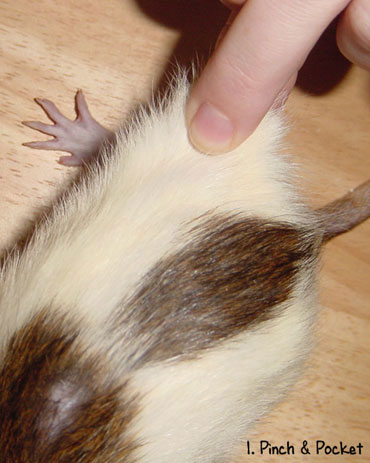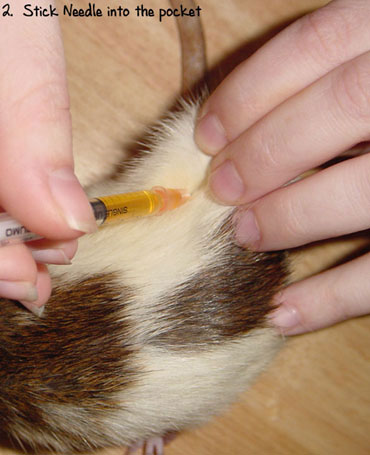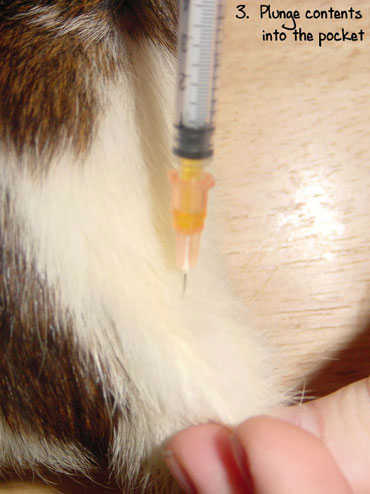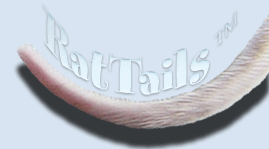
|














 
|
Giving Injections SubcutaneouslyThere are different types of things you can administer SubQ: Medications: Check with your vet. Some medications have a high pH and will literally eat through skin. If the medication you are injecting is not known to cause skin burns, administering it on the nape of the neck is the best option. Ringer's Solution or Fluids: Since, generally, fluids administered subcutaneously come in greater quantity than most medications, it's usually best to shoot for the skin above the shoulder blades rather than directly mid-neck. This way you can halve the amount given and place some on each side. Big bulbous lumps do annoy them so keeping the quantity small (around 5cc per area) is much appreciated by them. In addition, I think the balance (half and half on each side) helps.
Below are two photos depicting SubQ Administration at the center of the neck area: 
The concept is simple: You want to pocket the skin (there is a lot of excess skin there) and make it into a tent. If you are hydrating your rat with SubQ fluid administration, you will find that tenting the skin is almost impossible in a dehydrated rat. My suggestion is to massage the area between your fingers to loosen the skin before attempting to create your tent - this tends to make the skin just a bit more elastic and flexible. Once you've made your pocket, you want to aim your needle for the spot where there is the most air at the highest peak possible so as to avoid hitting something that is not skin (for example, furthest away from their rib cage) and you want to inject away from their head (so if they flinch, nothing disastrous comes of it). It shouldn't hurt: I say "shouldn't" because sometimes they do squeak. There are very few nerves there but you may just catch one. There are also a few little blood vessels so whatever you're administering may sting. And, lastly, if they are dehydrated they will squeak: I've found that the tighter their skin is, the more sensitive they are. Massaging the skin before giving the shot usually helps a lot. For those higher pH medications you want to aim for a place with more body fat so the fat absorbs that which may burn before it does any damage to the skin. Check with your vet: Some medications can be diluted in sterile saline in order to decrease the intensity. Others, however, can not. Below I show how to administer injectable doxycycline in order to avoid skin burns: 1) Create the tent:  2) Stick the needle into the pocket and aim for the air space but do not empty the contents. Wait a second or two. If they squeak, remove the needle. Some substances are toxic of injected into a blood vessel (bicillin, for example), others will leave a burn if injected into the blood vessel (injectable doxy, for example). If they squeak, chances are you hit a blood vessel. You can also pull the plunder back a bit to aspirate some contents at that location: If you see blood, withdraw and find another spot.  3) Once you've found a spot where they don't squeak or flinch, empty the contents of the syringe into your pocket:  That's it! (but you may want to check out the Flash tutorial here. ;O)
 tip: When navigating through the RatTails, clicking on the image that looks like the image above will take you back to this table of contents!
Disclaimer: There are many non-sarcastic accounts and tips on the web regarding rat care. This is not
one of them. These are merely accounts of our experiences with rats, our perceptions of these experiences, where we've failed
and where we've succeeded. These accounts are here for two purposes:
|
|

